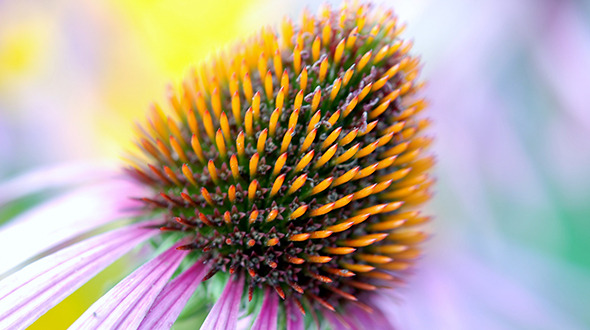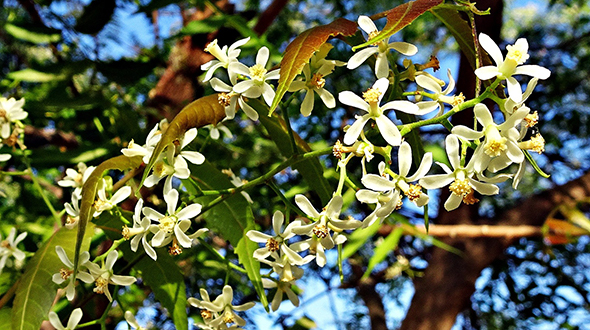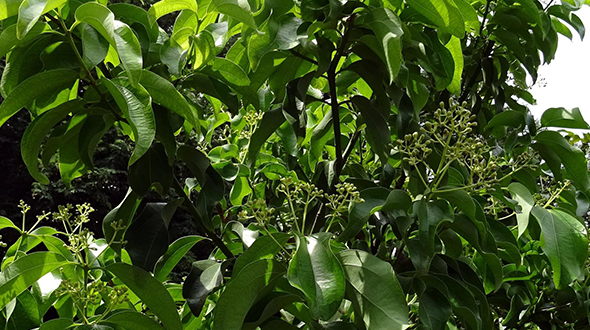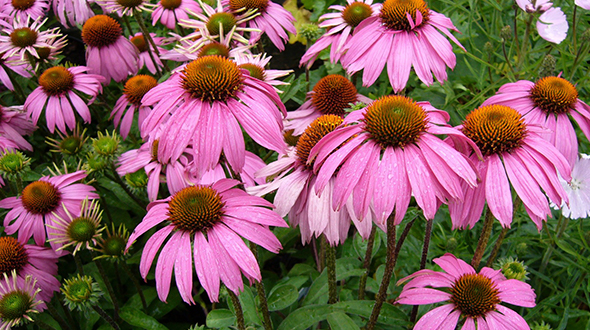
What if the shrubs you planted were not only visually appealing, but also had medicinal and therapeutic properties. Knowing what medicinal shrubs to plant on your landscape can offer additional benefits and be utilized when needed.
toddsmariettatreeservices.com gathered the following species and growing information for 5 medicinal shrubs that should be planted in your Marietta, Georgia landscape.
What are Medicinal Shrubs
Medicinal shrubs, also called medicinal herbs or plants, are used for their scent, flavor, or therapeutic properties. Herbal medicines are one type of dietary supplement sold as tablets, capsules, powders, teas, extracts, and fresh or dried plant parts. People have used herbal medicines to maintain or improve their health for generations. Consider planting the following medicinal shrubs in your Marietta, Georgia yard and garden:
1. Peppermint (Mentha × piperita)

Peppermint is a hybrid mint. It is a cross between watermint and spearmint and is indigenous to Europe and the Middle East. Nowadays, the plant is grown and cultivated in many regions around the world.
Mature Size – Peppermint can reach heights of 3 feet and a width of 2 to 3 feet.
Sun Requirements – This species thrives in a part shade to full sun location.
Preferred Soil and pH – Peppermint is an adaptable plant but prefers well-draining, loose, organically-rich soil with a pH ranging from 5.5 to 6.0.
Water Requirements – Water this species 2 times per week, keeping soil evenly moist without saturating it.
Medicinal Value – Peppermint oil is promoted for topical use (applied directly to the skin) for headaches, muscle aches, joint pain, and itching/skin irritation. In aromatherapy, peppermint oil is used to treat coughs and colds, improve mental function, and significantly reduce stress.
Hardiness Zone – 5 through 10
2. Lavender (Lavandula)

Lavender is a genus of 47 known species in the mint family. It is native to the Mediterranean’s hot, dry climate and can currently be found growing in most temperate climates worldwide.
Mature Size – Lavender can reach heights of 2 feet and a width of 2 to 3 feet.
Sun Requirements – This species thrives in a full sun location (6 hours or more).
Preferred Soil and pH – Lavender prefers well-draining soils with a pH ranging from 6.7 to 7.3.
Water Requirements – Water mature lavender plants every 2 to 3 weeks until buds form, then once or twice weekly until harvest.
Medicinal Value – Aromatherapists utilize lavender for inhalation therapy to treat headaches, nervous disorders, and exhaustion. Herbalists use lavender oil to treat skin ailments like fungal infections, wounds, eczema, and acne. This species is also used in healing baths for joint and muscle pain.
Hardiness Zone – 5 through 9
3. Neem (Azadirachta indica)

Since antiquity, neem has been renowned for healing. The earliest medical writings refer to the benefits of its fruits, seeds, oil, leaves, roots, and bark. Each of these elements has long been used in Indian medicine, and over thousands of years, millions of Asians have used neem medicinally.
Mature Size – Neem will typically grow as a tree reaching 50 to 65 feet tall with a well-rounded crown.
Sun Requirements – This species thrives in full sun – 6 hours or more.
Preferred Soil and pH – Neem will adapt to nearly any soil type and can tolerate pH values up to 8.5.
Water Requirements – Water mature neem specimens once weekly without overwatering.
Medicinal Value – Neem’s medicinal values are principally found in its foliage. Neem leaves exhibit immunomodulatory, anti-inflammatory, anti-hyperglycemic, anti-ulcer, anti-malarial, anti-fungal, anti-bacterial, anti-viral, antioxidant, anti-mutagenic, and anti-carcinogenic properties.
Hardiness Zone – 10 through 12 (Marietta’s winter temperatures will likely cause this species to lose its foliage in the colder months)
4. Cinnamon (Cinnamomum verum)

This species bears clusters of tiny star-shaped flowers in springtime, becoming small, dark purple fruit that smells like cinnamon. However, the spice is made from the species’ bark.
Mature Size – Cinnamon will typically grow as a tree reaching 50 feet tall with a well-rounded crown.
Sun Requirements – This species requires full sun. Plant your cinnamon in a location that gets at least twelve hours of daily sunlight.
Preferred Soil and pH – Cinnamon thrives in well-drained sandy soil with a 4.5 to 5.5 pH.
Water Requirements – Water mature cinnamon specimens once or twice weekly without overwatering.
Medicinal Value – Cinnamon Lowers Blood Sugar Levels and Has a Powerful Anti-Diabetic Effect. Cinnamon is well known for its blood-sugar-lowering properties.
Hardiness Zone – 9 through 11 (this species will require protection/shelter from Marietta’s winter temperatures)
5. Echinacea or Purple Coneflower (Echinacea purpurea)

Echinacea purpurea is a perennial herb native to the midwestern region of North America. It has tall stems that bear single pink or purple flowers with a central cone that is usually purple or brown. The large cone is a seed head with sharp spines resembling a stiff comb.
Mature Size – This species can reach heights of 4 feet and a width of 1 to 3 feet.
Sun Requirements – Echinacea thrives in full to partial sun, needing at least four hours of sunlight per day.
Preferred Soil and pH – Echinacea purpurea is adaptable to most soil types but prefers a sandy, well-drained loam and thrives in a 6.0 to 7.0 pH.
Water Requirements – Purple coneflowers require regular watering – about 1-inch per week.
Medicinal Value – Use echinacea to shorten the common cold and flu, and reduce symptoms, like sore throat, cough, and fever. Herbalists also recommend echinacea to help boost the immune system, helping the body fight infections.
Hardiness Zone – 3 through 9
Medicinal Shrubs in Marietta, Georgia Landscapes
In this article, you discovered species, growing, and medicinal information for several species that can thrive in Marietta, Georgia, landscapes.
Knowing which medicinal plant, shrub, or tree species to grow in your Marietta, Georgia, yard will help you grow an eclectic and intriguing landscape.
Without knowing shrubs can serve more than landscaping purposes, you would miss the therapeutic and healing advantages that some offer.
Sources:
plants.ces.ncsu.edu/plants/mentha-x-piperita/
heritagegarden.uic.edu/lavender-lavandula
nap.nationalacademies.org/read/1924/chapter/8
uaex.uada.edu/yard-garden/resource-library/plant-week/Cinnamomum-cassia-Cinnamon-09-08-2017.aspx
hgic.clemson.edu/factsheet/echinacea/
(678) 505-0266
Originally published on: http://www.toddsmariettatreeservices.com/5-medicinal-shrubs-for-your-marietta-georgia-landscape/

No comments:
Post a Comment